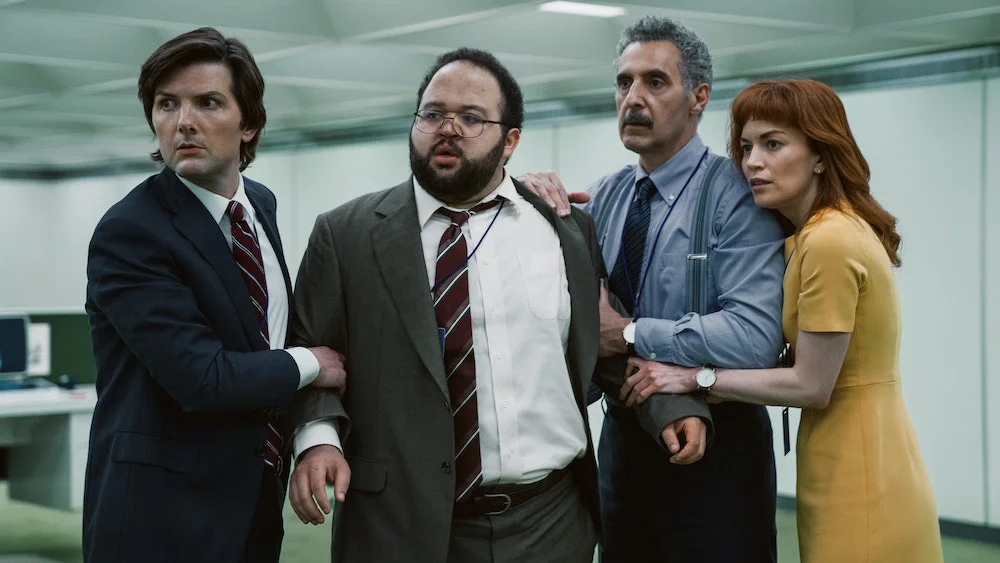
Like many industry observers, I have long been baffled by Apple’s strategy with Apple TV Plus, mostly by the fact that it has never licensed a sizable library that kept people on an app after they’d watched the one or two original series they’d initially come there to see.
But seeing where Apple is now, perhaps it is time to re-evaluate that theory.
Apple seems to have carved out a niche as one of the key places to watch the sort of programming that gets buzzed about by media types. Maybe not Yellowstone, but rather, Ted Lasso, CODA, Severance, Slow Horses, 1971, WeCrashed and, as of this week, Major League Baseball.
And for $4.99 per month, maybe that’s all they need.
Also read: Apple Makes History with Friday Night Baseball Debut
Yes, Apple seems to have made some mistakes along the way. By keeping the Apple TV device at six times the price of an entry-level Roku or Amazon Fire TV stick, it more or less ceded the streaming device market. But then again, dongles are dying off as smart TV interfaces improve, and so maybe Apple was right not to chase that market, after all.
Conventional wisdom has it that Apple assumed that TV viewing would shift to smartphones and tablets rather than traditional TV sets, and so it didn’t see the need to amp up their dongle game. That didn’t happen, of course, but if Apple ever thought about rolling out an Apple-branded TV, now would be a good time for it.
The smarter way to stay on top of the streaming and OTT industry. Sign up below.
There have been persistent rumors that Apple is rolling out a subscription plan for its iPhones, e.g., you would lease the phone the way you would lease a car. Given that Sky has rolled out something similar for smart TVs in the UK (Smart Glass), it would not be too much of a stretch to see Apple doing something similar in the U.S. if they did want to take back a piece of the hardware market.
Back to the Programming
Right now, the biggest problem all of the major SVOD services have is that, with the exception of Discovery Plus and (possibly) Disney Plus, consumers can’t tell them apart. They all have the same sort of “HBO-like” programming that appeals to a more sophisticated audience, along with a decent number of shows that are not all that noteworthy or HBO-like but are there to appeal to a certain demographic that the data indicated was being underserved.
Nowhere is that more obvious than Netflix, which seems to be relying on volume to produce hits (e.g., “If we put out 100 shows each month and 5% of them are hits, that’s five hits each month!”).
Not a bad theory, but it’s also created the perception that much of what is on Netflix these days is crap. Add in Netflix’s tendency to cancel series while they are still quite popular and you have the potential for a backlash.
Apple, with its carefully curated approach to original series and loyalty to its more popular ones, won’t be tarred with that particular brush, but their strategy is not without its risks.
If the originals they produce are all very good and the movies manage to win Oscars, then the theory works. Because $5 a month is not a whole lot to pay even if all you watch is one series.
Which may well be enough for most viewers to keep their subscription going. The success of the FASTs (not to mention their proliferation) means that there is no shortage of binge-able rerun programming for those times a viewer just wants TV as background noise and so Apple’s lack of library content may not be a problem.
While prior seasons of shows like The Office and Friends may help keep viewers subscribed to the services that have them, it’s unlikely that anyone is subscribing to see Dawson’s Creek or Knight Rider.
This means that Apple’s decision to position itself as a “sometimes” service makes a lot of sense in a market where everyone else is positioning themselves as an “all the time” service at a moment when viewers are unlikely to pick a single streaming service for the bulk of their viewing. (That time will likely come soon, but right now it seems that everyone is still in the “sampling the chocolates out of the box to see which one is their favorite” stage.)
Finally there is Apple’s Major League Baseball play, which gives it two big advantages: a reason for viewers to return to the app when they’re done watching whatever series they were bingeing, and an excellent vehicle for Apple’s style of advertising. ■
Alan Wolk is the co-founder and lead analyst for media consultancy TV[R]EV

